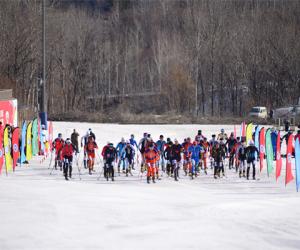
Canon has shaken up its entry-level offerings for the second time in 2008 with the launch of the Canon Rebel XS consumer-grade DSLR. Announced way back in June for the European market (as the EOS 1000D) but only recently available on this side of the Atlantic, the Rebel XS slots in at the very bottom of Canon's DSLR line – providing a second new entry-level option in Canon's lineup and a lower-cost, lower-res alternative to the relatively advanced XSi.
The ace up Canon's sleeve in the case of the XS, though, is that this camera retains a surprising amount of the technology that made the XSi an Editor's Choice pick around these parts. If you like what Canon's doing at the entry level but have been turned off by the Rebel XSi's upper-tier market position and street price, the new XS may just be the Rebel you've been waiting for.

FEATURES OVERVIEW
The Rebel XS represents a shift in strategy for Canon; with the manufacturer bringing a second simultaneously developed and supported DSLR to the bottom-tier consumer market. Traditionally, Canon has demoted its previous-generation Rebel into the entry-level spot with each new announcement. While the new XS diverges from this formula insofar as it was purpose-built for beginning DSLR users (rather than simply a more advanced hand-me-down, as in the case of the XTi that it replaces), the net result really isn't that different from what we've seen before: in terms of both hardware and design, the XS is very much an amalgam of XSi and XTi.
To this end, the XS uses the previous-generation 10.1 megapixel CMOS sensor as well as the XTi's smaller 2.5 inch LCD. XSi-level upgrades include DIGIC III processing, Canon's advanced "Picture Style" menu that allows shooters to fine-tune image processing (and includes space for several user-defined custom settings), and an impressively fast advertised continuous shooting speed with a new-for-XS unlimited buffer for JPEG shooting.

The XS also brings the XSi's live view system (which allows the screen to be used for shot composition) all the way down to Canon's entry-level model. The XS's live view implementation moves beyond the basic with the addition of a contrast-detection AF mode that allows the camera to auto focus without interrupting the on-screen preview to do so – a feat not possible in the first generation of live view DSLRs.
As with previous Rebel DSLRs, the XS's shooting modes are divided into two basic groups, which Canon terms the "Basic Zone" and the "Creative Zone." The Basic Zone is made up of the XS's auto exposure and scene preset options. Basic Zone presets are as follows:

Auto Exposure: Camera selects all exposure values
Portrait: Settings are optimized for portraiture, with adjustments to image tone and flash mode
Landscape: Increased contrast mode that favors narrower apertures
Macro: Moderate aperture settings are preferred in this mode
Sports: Continuous drive and AF options are enabled; higher shutter speeds are preferenced
Night Scene: Enables slow flash sync to capture both subject and background
Flash Suppressed: Flash is disabled
Note that in the Basic Zone, many exposure control and general shooting options (including AF drive mode, metering options, and flash modes) are locked out or limited.
Canon's Creative Zone modes encompass the full range of expected user-controlled exposure options, with a few interesting additions:
Program: Auto exposure mode with user control for flash settings, metering mode, etc.

Shutter Priority: User selects shutter speed, and camera calculates aperture for correct exposure
Aperture Priority: User selects aperture, and camera calculates shutter speed for correct exposure
Manual: User selects both aperture and shutter speed
Auto Depth of Field: Camera automatically calculates aperture to ensure that depth of field covers all focus points
Like most DSLRs, playback options are fairly basic with the XS. The camera does incorporate an orientation sensor that automatically rotates portrait-orientation images during playback. As with Canon's point-and-shoots, it's also easy to scroll through images either 10 or 100 at a time using the control dial.
Kit Lens
I appreciate that Canon has incorporated its proprietary optical Image Stabilizer by default into the new kit lens – the EF-S 18-55mm f/3.5-5.6 IS – but as noted when we tested the XSi, I still don't have a lot of good things to say about the upgrade. The lens feels flimsy, and our review sample – which appears to have spent some time taped to the inner fender of a Jeep given the amount of dust permanently adhered to the crevices of its zoom ring – reminds me of just how poorly these all-plastic budget lenses age if you don't handle them carefully.
Optically, the lens remains a weak spot for this setup as it was for the XSi, but the flip side is that with slightly less resolution, the 18-55mm also isn't as taxed to pull out details in this application. Not surprising then that on balance it seems to perform better here than on the XSi.
For a detailed listing of specifications and features, please refer to the specifications table found at the bottom of the review.











